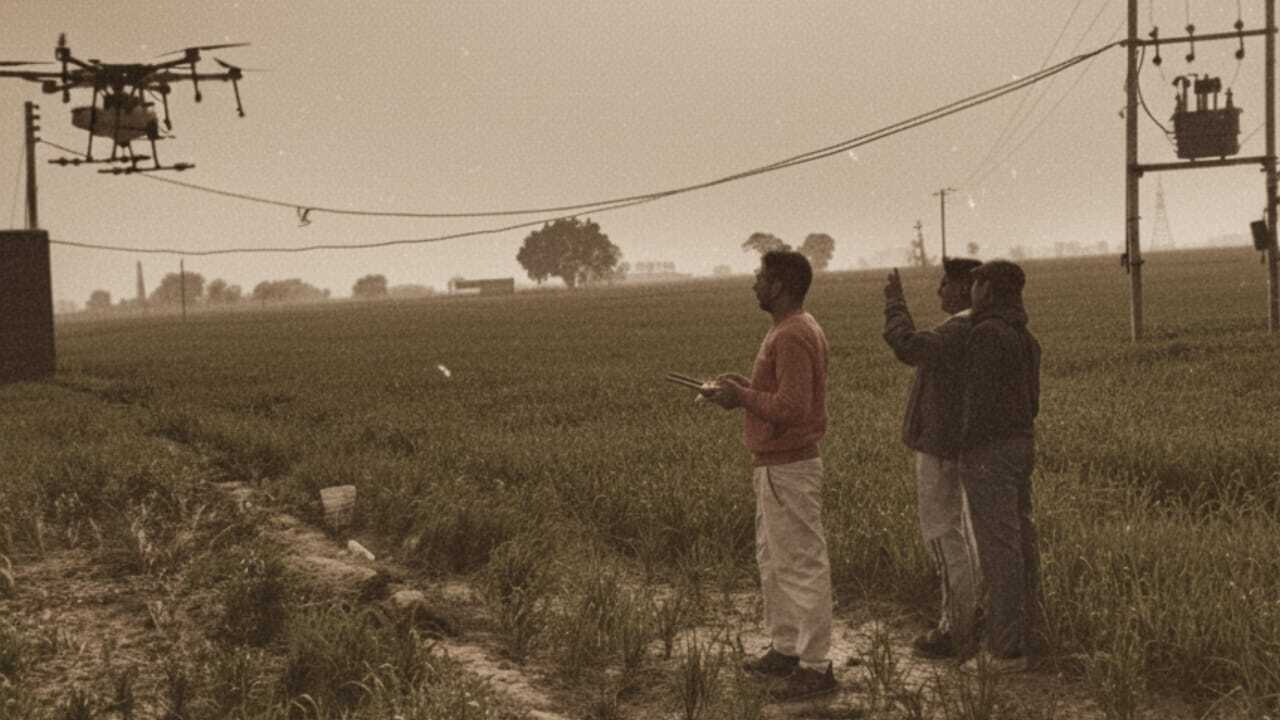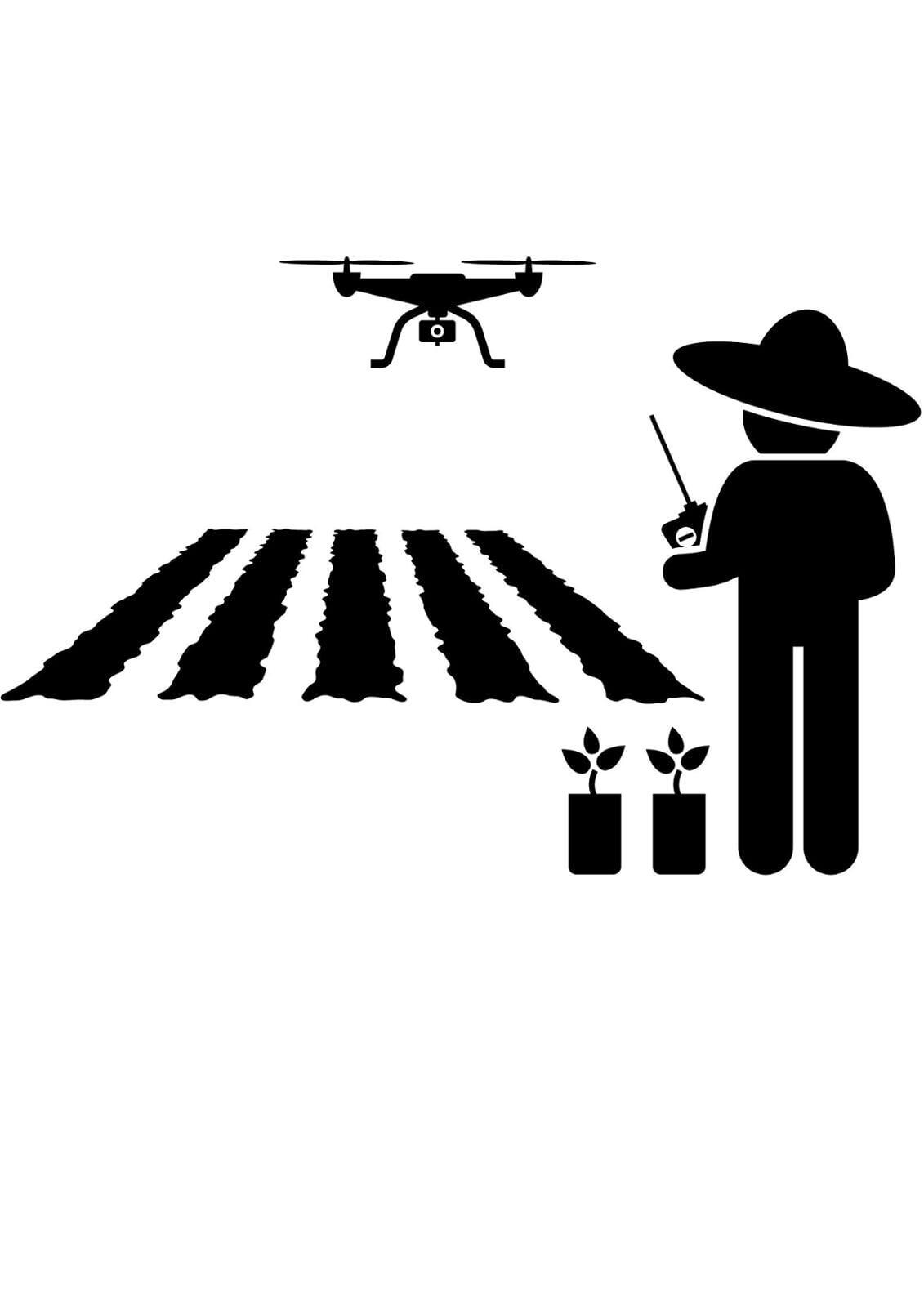
JOURNEY
Founded in 2022, we started with just one drone and a big dream—to revolutionize Indian farming. From early struggles, farmer doubts, and financial hurdles to building strong partnerships, training rural youth, and expanding nationwide, we have grown into a trusted leader, making agriculture smarter, safer, and more efficient with modern drone technology.
2021-
Vision for Change
The idea of Gurudrone was born when Mr. Jatinder, an Agriculture B.Tech graduate working as a Rural Development Officer (RDO) in a bank, observed farmers’ challenges very closely. He realized that farmers were struggling with high input costs and earning very little profit. With a vision to bring modern technology into agriculture, he began planning to introduce drones for farming. Manual spray was not only physically damaging the crops but was also severely affecting the health of farmers and laborers, often causing harmful diseases like cancer.
His main vision was to reduce the overuse of pesticides, which not only harms crops and soil but also increases farmers’ expenses. According to him, agriculture drones are “Revolution 2.0” in the agriculture sector. The ultimate goal was to reduce farmers’ input costs and make agriculture both profitable and sustainable.
2022 –
First Step into Drone Technology
After exploring different possibilities, Mr. Jatinder decided to take the first step by purchasing an agricultural drone to gain practical experience. While searching online, he came across the Iotech website and was convinced about the potential of their drones. Gurudrone purchased its first agricultural drone under the Agriculture Infrastructure Fund (AIF) policy. The cost was ₹10 lakh for the drone and ₹1 lakh for pilot certification. Mr. Lokesh Sheokand became the first certified agricultural drone pilot, and also the first male drone pilot from Haryana. To spread awareness, the team started village-to-village demonstrations. But convincing farmers was extremely difficult—many were not even ready to listen, let alone agree to get their crops sprayed through drones. They faced initial resistance from farmers, and due to inexperience and frequent crashes, financial losses also occurred. Still, these early struggles became valuable lessons for the future.
2023 –
Breakthrough and Expansion
In February 2023
Gurudrone got its first major spraying contract of 300 acres at the rate of ₹600 per acre from BASF. Successfully completing this project boosted confidence and motivated the team to move forward with more energy. Later, Syngenta showed interest in collaborating but required Gurudrone to operate with at least 10 drones
By June 2023,
Gurudrone expanded its fleet by purchasing 10 more drones and officially tied up with Syngenta, taking the total fleet size to 11 drones. During this phase, Gurudrone also started providing free demonstrations and training programs for boys and girls, aiming to empower rural youth with new skills.
Although the team faced more crashes and hurdles because of inexperienced pilots, handing over the remote to new pilots for proper training became one of the biggest reasons for accidents. This led to very heavy financial losses. At that time, Gurudrone’s profit remained zero because the main mission was to spread awareness among farmers and to build skilled drone pilots. The company faced continuous losses, but never gave up. Whenever drones crashed, they had to be sent to Iotech for repair, which cost a huge amount of money. Despite all the struggles, Gurudrone remained committed to its vision
2024 –
Scaling Operations and Service
Infrastructure In January 2024, Mr. Jatinder made a life-changing decision by resigning from his government job to dedicate himself fully to farmers and Gurudrone’s mission.By May 2024, Gurudrone introduced the Village Level Entrepreneur (VLE) model to build a strong farmer support network and ensure that drone technology could reach every corner of rural areas. However, due to repeated drone crashes and continuous financial losses, the team realized the need for technical self-reliance. As a result, Gurudrone started its own drone repair and service center, which not only reduced downtime for farmers but also supported other drone operators in the region.
Infrastructure In January 2024, Mr. Jatinder made a life-changing decision by resigning from his government job to dedicate himself fully to farmers and Gurudrone’s mission.By May 2024, Gurudrone introduced the Village Level Entrepreneur (VLE) model to build a strong farmer support network and ensure that drone technology could reach every corner of rural areas. However, due to repeated drone crashes and continuous financial losses, the team realized the need for technical self-reliance. As a result, Gurudrone started its own drone repair and service center, which not only reduced downtime for farmers but also supported other drone operators in the region.
2025 -
Technology Enhancement and Network Expansion
In May 2025, Gurudrone adopted advanced sensor-based soil testing machines, which made the process of testing soil easier and more practical for farmers. These machines were demonstrated during village awareness camps, helping farmers understand the importance of soil health and responsible pesticide use. Alongside spraying services, Gurudrone now actively promoted soil care and balanced fertilizer usage.
The VLE network expanded rapidly across Haryana, Uttar Pradesh, Punjab, and Rajasthan, with nearly 150 drones operating in the field. This expansion ensured maximum farmer coverage for spraying, soil testing, and service support. By 2025, Gurudrone had established professional offices, multiple branches, and a strong repair and maintenance infrastructure. The company had grown into a trusted name in modern agriculture, empowering rural youth and making technology accessible to farmers at the grassroots level.
In May 2025, Gurudrone adopted advanced sensor-based soil testing machines, which made the process of testing soil easier and more practical for farmers. These machines were demonstrated during village awareness camps, helping farmers understand the importance of soil health and responsible pesticide use. Alongside spraying services, Gurudrone now actively promoted soil care and balanced fertilizer usage.
The VLE network expanded rapidly across Haryana, Uttar Pradesh, Punjab, and Rajasthan, with nearly 150 drones operating in the field. This expansion ensured maximum farmer coverage for spraying, soil testing, and service support. By 2025, Gurudrone had established professional offices, multiple branches, and a strong repair and maintenance infrastructure. The company had grown into a trusted name in modern agriculture, empowering rural youth and making technology accessible to farmers at the grassroots level.
The VLE network expanded rapidly across Haryana, Uttar Pradesh, Punjab, and Rajasthan, with nearly 150 drones operating in the field. This expansion ensured maximum farmer coverage for spraying, soil testing, and service support. By 2025, Gurudrone had established professional offices, multiple branches, and a strong repair and maintenance infrastructure. The company had grown into a trusted name in modern agriculture, empowering rural youth and making technology accessible to farmers at the grassroots level.




